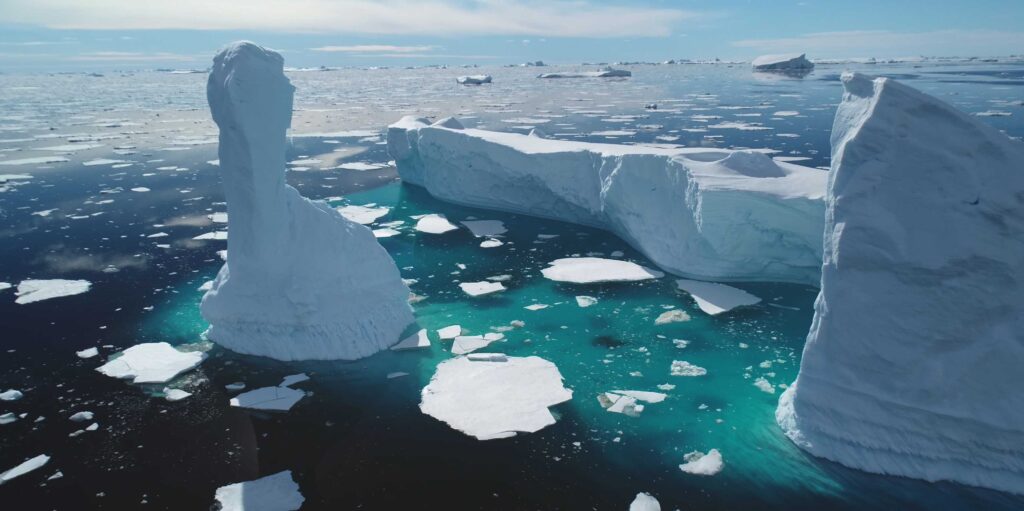Climate Change is Slowing the Earth’s Rotation – and Making Our Days Longer
4 Mins Read
Melting ice caps have made the Earth thicker, slowed its rotation and lengthened its days, impacting financial transactions, GPS and cellphone networks.
The mass melting of polar ice caps is changing the shape of the Earth, causing each day to get longer, according to new research.
While the change is an increase in milliseconds, it could potentially disrupt industries and services that rely on precise timekeeping, such as GPS and space navigation, power grids, financial transactions, cellphone networks, and internet traffic.
Scientists at ETH Zurich found that the rate of slowing is higher than at any point in the 20th century, and highlights the impact of human-caused climate change on the Earth.
In two NASA-backed studies published in the Proceedings of the National Academy of Sciences (PNAS) and Nature Geoscience journals, the researchers how our activities are affecting polar motions, the Earth’s movement, and the length of the day.
Earth is becoming wider and slower

The length of days has been steadily increasing over time due to the gravitational pull of the moon on Earth’s oceans and land, but this change has accelerated thanks to the climate-change-induced melting of ice sheets in Greenland and Antarctica.
Water stored at high latitudes is now flowing into the world’s ocean, shifting its presence from the poles to the equator. As a result, the Earth is now more oblate – or wider – at its centre. “This means that a shift in mass is taking place, and this is affecting the Earth’s rotation,” said Benedikt Soja, professor of space geodesy at ETH Zurich.
Think of a figure skater. When they do a pirouette, they hold their arms close to their body first, and then stretch them out. This slows the rotation because the masses move away from the axis of rotation, and increases physical inertia. Likewise, if the Earth turn more slowly, the days get longer.
The Nature Geoscience study, meanwhile, revealed that melting ice masses alter the Earth’s axis of rotation too, meaning the points where the axis meets the Earth’s surface move. Additionally, movements inside the Earth’s mantle have been affecting polar motion too.
“Climate change is causing the Earth’s axis of rotation to move, and it appears that the feedback from the conservation of angular momentum is also changing the dynamics of the Earth’s core,” explained Soja.
Mostafa Kiani Shahvandi, lead author of the Nature Geoscience research, added: “Ongoing climate change could therefore even be affecting processes deep inside the Earth and have a greater reach than previously assumed.” But she added that these effects are minor and unlikely to pose a risk.
But Soja added: “Even if the Earth’s rotation is changing only slowly, this effect has to be taken into account when navigating in space – for example, when sending a space probe to land on another planet.” Even a slight deviation of 1cm centimetre on Earth can grow to a deviation of hundreds of metres over the huge distances involved. “Otherwise, it won’t be possible to land in a specific crater on Mars,” he said.
The climate crisis could change the way we keep time

The PNAS study, where the scientists used observations and computer reconstructions to analyse the effect of melting ice, stated that the pace of change in a day’s length has varied from 0.3-1.0 milliseconds per century (ms/cy) between 1900 and 2000.
But climate change has accelerated melting since the turn of the century, thus also increasing the rate of slowing to 1.3 ms/cy.
“This present-day rate is likely higher than at any time in the past few thousand years,” the study stated. “It is projected to remain approximately at a level of 1.0 ms/cy for the next few decades, even if greenhouse gas emissions are severely curbed.”
But if emissions continue at their current rate, the length of the day will keep increasing at a rate of 2.6 ms/cy by 2100. This would mean climate change will overtake lunar tides as the biggest contributor to long-term variations in day length. “These findings signify the unprecedented effect of climate change on planet Earth,” the researchers wrote.
A separate study published in the Nature journal this March, revealed that more rapid melting of polar ice would slow the Earth more rapidly and could impact how we measure time. The international standard of timekeeping, Coordinated Universal Time (UTC), is based on 48 atomic clocks kept in labs across the world.
To maintain the link between atomic time and the Earth’s rotation, a leap second is added every once in a while. Since 1972, 27 leap seconds have been added to account for the planet’s slowing rotations.
Continued slowing – and at a faster rate – could disrupt many sectors reliant on precise time measurement, including tech companies, which have warned that adjusting time with leap second can cause networks to collapse. Last week’s global outage showed just how such events can affect the world.
Climate change will now need to be factored into these increasingly complex decisions. The loss of polar ice sheets is among the climate tipping points identified by scientists, which set in motion a chain of ecological disasters with potentially irreversible implications.



